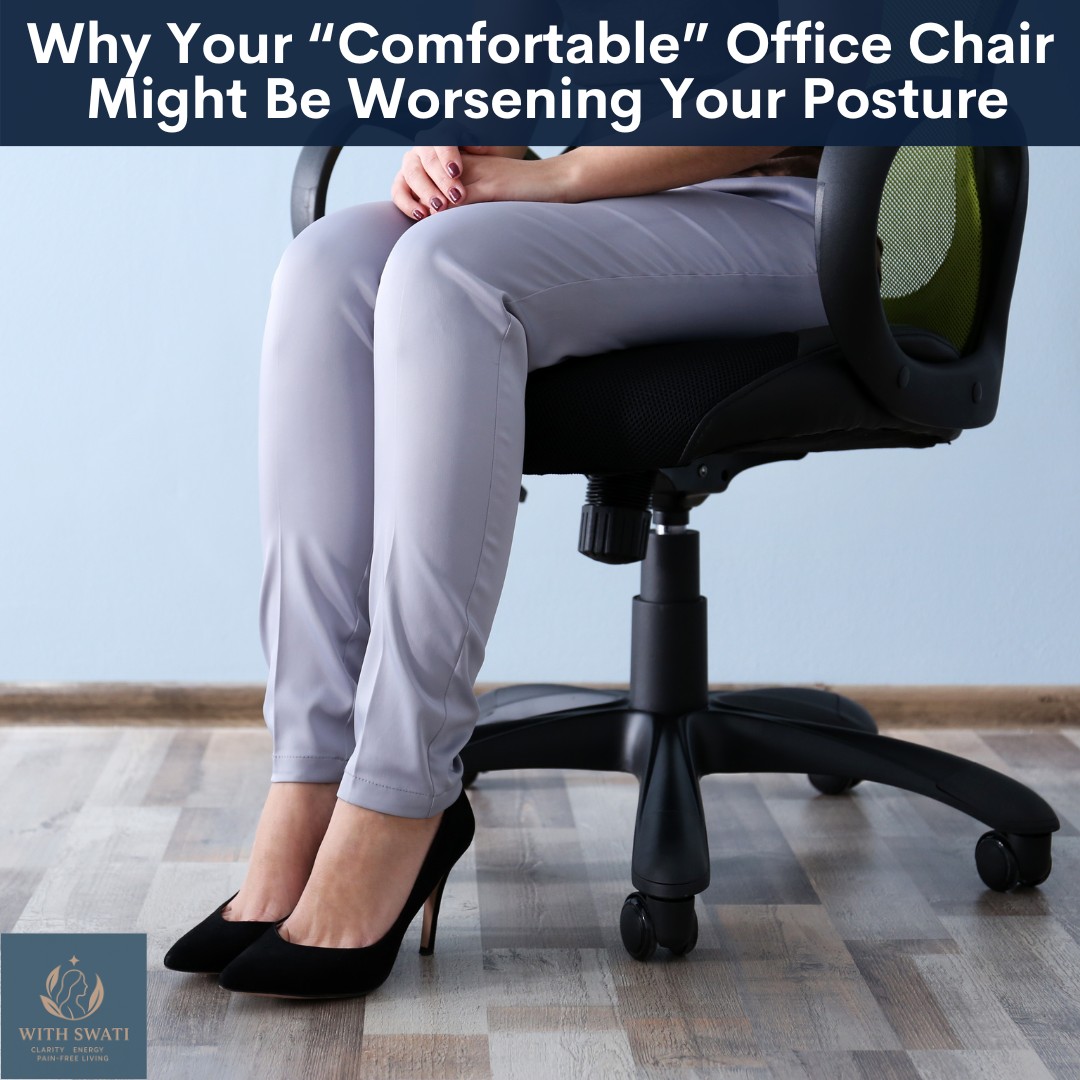
As an executive mum you may have suffered from back pain at some or the other time. Slouched or poor postures can be often responsible for this. You may have tried to correct your posture, only to find that your back or neck starts to hurt. In this blog, lets discuss how and why this happens. This would give you a better understanding of how to achieve and maintain a good posture. We will look into how to manage the back pain arising from sitting in a good posture in another blog soon.
To understand why you get pain or discomfort when you sit upright in a good posture, it’s essential to explore the connection between your spine, brain, and muscles. The brain acts as the control center for all muscles and their associated body movements and posture. When you regularly sit in a slouched posture, your muscles adapt to this posture, and your brain learns to recognize it as the new normal. This adaptation involves a process called neuroplasticity, where your brain and nervous system develop muscle memory. The more you maintain a certain posture, like sitting with a rounded back, the better your brain gets at communicating with those specific muscles, reinforcing this poor posture as your default.
When you attempt to correct your posture, like sitting up straight, your muscles must return to their original lengths. However, because your brain has already adjusted to the slouched posture, it perceives this new, upright good posture as unfamiliar or even incorrect. Essentially, your brain is receiving signals that the muscles are now working against its learned pattern, which causes you to return to the poor posture after sitting in a good posture for a few minutes or hours.
Moreover, the spinal muscles that have been lengthened due to poor postures are often weaker and the muscles at the front of your body, like the chest, are tighter and shorter. When you try to sit upright, these muscle imbalances contribute to the discomfort or pain. Moreover the weak spinal muscles are not able to hold themselves upright against gravity. In very simple words one of the main elements of the achieving a good posture is sorting out the muscular imbalance, helping your body adapt to a healthier posture over time.
This is also where the concept of neuroplasticity comes into play. Neuroplasticity refers to the brain's ability to reorganize itself by forming new neural pathways, allowing it to adjust and learn new habits. By consistently practicing good posture, you can retrain your brain to recognize this as the new normal. You are essentially creating muscle memory in your brain. Think of it like molding Play-Doh; over time, your brain reshapes its perception of normal, and maintaining good posture becomes less painful and more natural.
The amount of time that it takes to correct your posture can be variable. Here is a video on 'How long does it take to fix a Poor Posture?'
If you like this blog and want to be notified about new blogs as soon as they are published, subscribe to my mailing list below.
I would love to see you around the internet! For other places you can explore more about me: https://withswati.com/page/link
















0 Comments